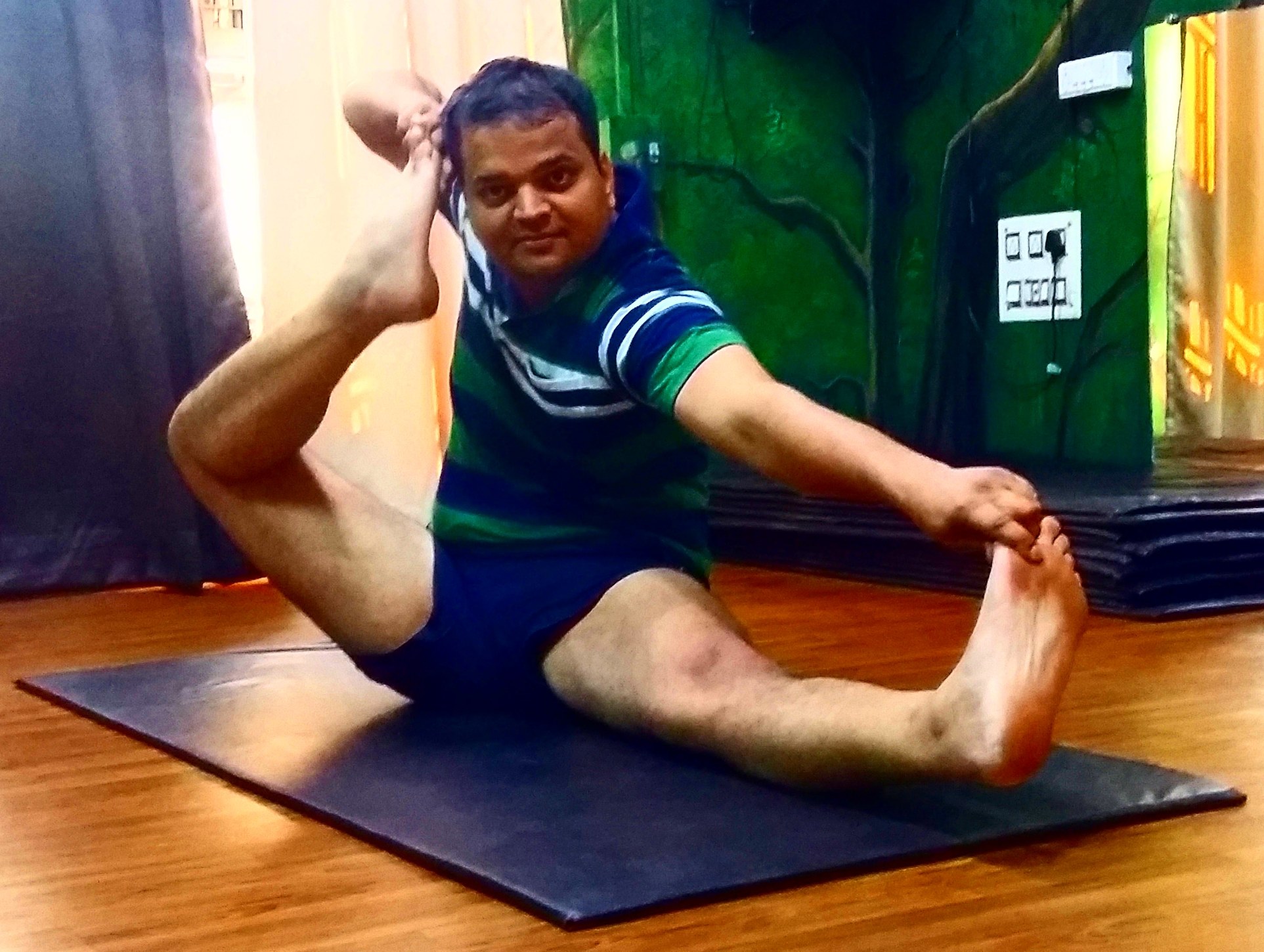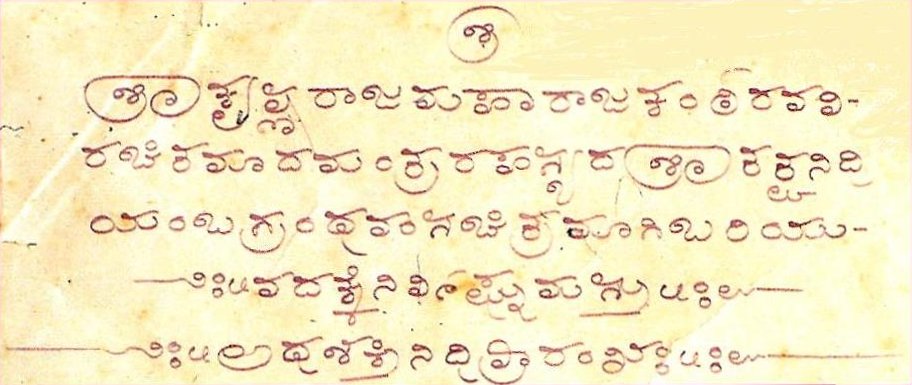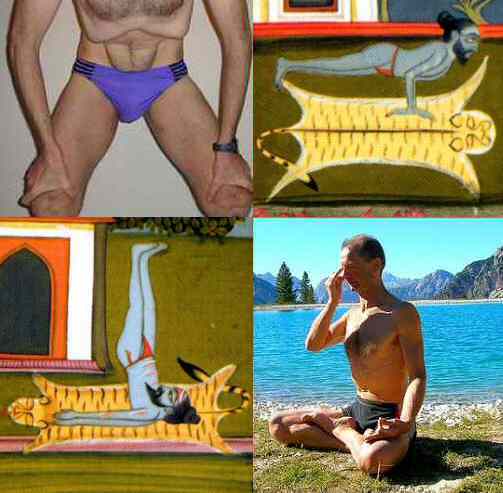|
Haṭhābhyāsapaddhati
The ''Haṭhābhyāsapaddhati'' ("Manual on the practice of Haṭha yoga") is a manual of Haṭha yoga written in Sanskrit in the 18th century, attributed to Kapāla Kuraṇṭaka; it is the only known work before modern yoga to describe elaborate sequences of asanas and survives in a single manuscript. It includes unusual elements such as rope poses. Manuscript The ''Haṭhābhyāsapaddhati'' is an 18th-century manuscript, written by Kapāla Kurantaka, that describes elaborate sequences of asanas in Haṭha yoga, including many that are not practised today. Its name means "Manual on the practice of Haṭha yoga". It was written before the British Raj and well before the advent of modern yoga, but it appears to have been influenced by the physical culture of the period in India, including the practice of martial arts. It is arranged in six groups and includes asanas such as Gajāsana, elephant pose, which demand repeated movements, in the case of Gajāsana repetitions of Adho Muk ... [...More Info...] [...Related Items...] OR: [Wikipedia] [Google] [Baidu] |
Akarna Dhanurasana
Akarna Dhanurasana (; ), also called the Archer pose, Bow and Arrow pose, or Shooting Bow pose is an asana in hatha yoga and modern yoga as exercise. The posture resembles an archer about to release an arrow. Etymology and origins The name of the pose is from Sanskrit , "ear" with the prefix ''Ā'', "towards" or "near". means "bow" and means "posture" or "seat". The name alludes to a myth in the Ramayana in which the infant Sita is able to lift Shiva's enormous bow, and when she reaches marriageable age, only Rama is able to wield it, and so become her husband. The asana is described but not named in the 18th century hatha yoga text ''Haṭhābhyāsapaddhati''. Its description of asana no. 51 runs "Grasping the toes of the feet with both hands, he yoginshould touch the big toes, one at a time, on the ears." The pose is shown as ''Dhanurāsana'' in the 19th century ''Sritattvanidhi''. The manuscript uses the description from the ''Haṭhābhyāsapaddhati'', giving it a nam ... [...More Info...] [...Related Items...] OR: [Wikipedia] [Google] [Baidu] |
Adho Mukha Svanasana
Downward Dog Pose, Downward-facing Dog Pose, or Downdog, also called Adho Mukha Svanasana (; ), is an inversion asana in yoga as exercise. It is often practised as part of a flowing sequence of poses, especially Surya Namaskar, the Salute to the Sun. The asana does not have formally named variations, but several playful variants are used to assist beginning practitioners to become comfortable in the pose. Downward Dog stretches the hamstring and calf muscles in the backs of the legs, and builds strength in the shoulders. Some popular sites have advised against it during pregnancy, but an experimental study of pregnant women found it beneficial. Downward Dog has been called "deservedly one of yoga's most widely recognized yoga poses" and the "quintessential yoga pose". As such it is often the asana of choice when yoga is depicted in film, literature, and advertising. The pose has frequently appeared in Western culture, including in the titles of novels, a painting, and a televi ... [...More Info...] [...Related Items...] OR: [Wikipedia] [Google] [Baidu] |
Sritattvanidhi
The ''Sritattvanidhi'' (, "The Illustrious Treasure of Realities") is a treatise written in the 19th century in the Mysore Palace, Karnataka on the iconography and iconometry of divine figures in South India. One of its sections includes instructions for, and illustrations of, 122 hatha yoga postures. Authorship The ''Sritattvanidhi'' is attributed to the then Maharaja of Mysore, Krishnaraja Woḍeyar III (b. 1794 - d. 1868). The Maharaja was a great patron of art and learning, and was himself a scholar and writer. Around 50 works are ascribed to him. The first page of the ''Sritattvanidhi'' attributes authorship of the work to the Maharaja himself: Martin-Dubost's review of the history of this work says that the Maharaja funded an effort to put together in one work all available information concerning the iconography and iconometry of divine figures in South India. He asked that a vast treatise be written, which he then had illustrated by miniaturists from his palace. ... [...More Info...] [...Related Items...] OR: [Wikipedia] [Google] [Baidu] |
Jacqueline Hargreaves
Jason Birch is a scholar of medieval haṭha yoga and a founding member of SOAS's Centre for Yoga Studies. His research includes locating and translating early yoga manuscripts, and preparing critical editions, such as of the '' Amaraugha''. Biography Jason Birch gained his bachelor's degree in Sanskrit and Hindi at the University of Sydney. He won a Clarendon Scholarship to attend Balliol College, Oxford to study the ''Amanaska'', the earliest rāja yoga text, under Alexis Sanderson. He completed his DPhil there in 2013. In 2014 he joined the Oxford Centre for Hindu Studies as a research fellow. From 2015 he took part in the five-year Haṭha Yoga Project at SOAS University of London, where he has been translating and editing Sanskrit texts on haṭha yoga Hatha yoga (; Sanskrit हठयोग, International Alphabet of Sanskrit Transliteration, IAST: ''haṭhayoga'') is a branch of yoga that uses physical techniques to try to preserve and channel vital force or ene ... [...More Info...] [...Related Items...] OR: [Wikipedia] [Google] [Baidu] |
Yoga Kurunta
The ''Yoga Korunta'' or ''Yoga Kuruntha'' is a purported 5,000 year old text on yoga, said to have been written in Sanskrit by an otherwise unknown author, Vamana Rishi, allegedly discovered by Tirumalai Krishnamacharya in the National Archives of India in the early 20th century, and supposedly lost when Krishnamacharya's only copy was eaten by ants. Krishnamacharya also told various other stories of how he came across the ''Yoga Korunta''; Fernando Pagés Ruiz noted in the ''Yoga Journal'' that he had heard "at least five conflicting accounts" of the supposed text. Krishnamacharya later related an oral "translation" of the text to his students, such as K. Pattabhi Jois and B. K. S. Iyengar. Jois claimed to have used that as the basis of his Ashtanga (vinyasa) yoga system. The original text reportedly was not preserved, and its historicity and existence has been questioned; Krishnamacharya also spoke of a ''Yoga Rahasya'' which similarly has never been seen by anyone else. Acco ... [...More Info...] [...Related Items...] OR: [Wikipedia] [Google] [Baidu] |
Haṭha Yoga
Hatha yoga (; Sanskrit हठयोग, International Alphabet of Sanskrit Transliteration, IAST: ''haṭhayoga'') is a branch of yoga that uses physical techniques to try to preserve and channel vital force or energy. The Sanskrit word हठ ''haṭha'' literally means "force", alluding to a system of physical techniques. Some hatha yoga style techniques can be traced back at least to the 1st-century CE, in texts such as the Hindu Itihasa, Sanskrit epics and Buddhism's Pali canon. The oldest dated text so far found to describe hatha yoga, the 11th-century ''Amritasiddhi, Amṛtasiddhi'', comes from a Tantra, tantric Buddhist milieu. The oldest texts to use the terminology of ''hatha'' are also Vajrayana Buddhist. Hindu hatha yoga texts appear from the 11th century onward. Some of the early hatha yoga texts (11th-13th c.) describe methods to raise and conserve bindu (vital force, that is, semen, and in women ''rajas –'' menstrual fluid). This was seen as the physical esse ... [...More Info...] [...Related Items...] OR: [Wikipedia] [Google] [Baidu] |
Penguin Books
Penguin Books Limited is a Germany, German-owned English publishing, publishing house. It was co-founded in 1935 by Allen Lane with his brothers Richard and John, as a line of the publishers the Bodley Head, only becoming a separate company the following year."About Penguin – company history" , Penguin Books. Penguin revolutionised publishing in the 1930s through its inexpensive paperbacks, sold through Woolworths (United Kingdom), Woolworths and other stores for Sixpence (British coin), sixpence, bringing high-quality fiction and non-fiction to the mass market. Its success showed that large audiences existed for several books. It also affected modern British popular culture significantly through its books concerning politics, the arts, and science. Penguin Books is now an imprint (trad ... [...More Info...] [...Related Items...] OR: [Wikipedia] [Google] [Baidu] |
Roots Of Yoga
A root is the part of a plant, generally underground, that anchors the plant body, and absorbs and stores water and nutrients. Root or roots may also refer to: Art, entertainment, and media * ''The Root'' (magazine), an online magazine focusing on African-American culture * The Roots, a location in the video game '' Kya: Dark Lineage'' Films * ''Roots'' (film) (), a 1955 Mexican drama * '' Poor Relatives'', also released as ''Roots'', a 2005 Russian film * ''Roots'', the English title for the 2019 Tamil film '' Sethum Aayiram Pon'' Literature and stage plays * ''Koreni'' (novel) (English: ''The Roots''), a 1954 novel by Serbian author Dobrica Ćosić * ''Roots'' (play), a 1958 play by Arnold Wesker * '' Roots: The Saga of an American Family'', a 1976 novel by Alex Haley about slavery in the United States Music * Root (chord), the fundamental note of a chord * Roots music (other) Groups and individuals * Root (band), a Czech metal band * Root (singer), a Japanese ... [...More Info...] [...Related Items...] OR: [Wikipedia] [Google] [Baidu] |
Norman Sjoman
Norman E. Sjoman (born July 6, 1944, Mission City) is known as author of the 1996 book '' The Yoga Tradition of the Mysore Palace'', which contains an English translation of the yoga section of ''Sritattvanidhi'', a 19th-century treatise by the Maharaja of Mysore, Krishnaraja Wodeyar III (b. 1794 - d. 1868). This book contributes an original view on the history and development of the teaching traditions behind modern asanas. According to Sjoman, a majority of the tradition of teaching yoga as exercise, spread primarily through the teachings of B. K. S. Iyengar and his students, "appears to be distinct from the philosophical or textual tradition hatha_yoga.html" ;"title="f hatha yoga">f hatha yoga and does not appear to have any basis as a [genuine] tradition as there is no textual support for the asanas taught and no lineage of teachers." Education Norman Sjoman studied at the University of British Columbia and Stockholm University. He obtained a PhD from the Centre of A ... [...More Info...] [...Related Items...] OR: [Wikipedia] [Google] [Baidu] |
Krishnamacharya
Tirumala Krishnamacharya (18 November 1888 – 28 February 1989) was an Indian yoga as exercise, yoga teacher, ayurvedic healer and scholar. He is seen as one of the most important gurus of modern yoga, and is often called "Father of Modern Yoga" for his wide influence on the development of postural yoga. Like earlier pioneers influenced by physical culture such as Yogendra and Kuvalayananda, he contributed to the revival of hatha yoga. Krishnamacharya held degrees in all the six Vedic ''darśanas'', or Indian philosophies. While under the patronage of the King of Mysore, Krishna Raja Wadiyar IV, Krishnamacharya traveled around India giving lectures and demonstrations to promote yoga, including such feats as apparently stopping his heartbeat. He is widely considered as the architect of ''vinyāsa'', in the sense of combining breathing with movement; the style of yoga he created has come to be called Viniyoga, Viniyoga or Vinyasa Krama Yoga. Underlying all of Krishnamacharya ... [...More Info...] [...Related Items...] OR: [Wikipedia] [Google] [Baidu] |
Sanskrit
Sanskrit (; stem form ; nominal singular , ,) is a classical language belonging to the Indo-Aryan languages, Indo-Aryan branch of the Indo-European languages. It arose in northwest South Asia after its predecessor languages had Trans-cultural diffusion, diffused there from the northwest in the late Bronze Age#South Asia, Bronze Age. Sanskrit is the sacred language of Hinduism, the language of classical Hindu philosophy, and of historical texts of Buddhism and Jainism. It was a lingua franca, link language in ancient and medieval South Asia, and upon transmission of Hindu and Buddhist culture to Southeast Asia, East Asia and Central Asia in the early medieval era, it became a language of religion and high culture, and of the political elites in some of these regions. As a result, Sanskrit had a lasting effect on the languages of South Asia, Southeast Asia and East Asia, especially in their formal and learned vocabularies. Sanskrit generally connotes several Indo-Aryan languages# ... [...More Info...] [...Related Items...] OR: [Wikipedia] [Google] [Baidu] |






